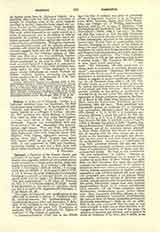

Cardica, a titular see of Thessaly. Cardica is a Latinized medieval form for Gardicium, the true Greek name being Gardikion. It figures only in later “Notitise episcopatuum” of the twelfth or thirteenth century as a suffragan of Larissa. Lequien (II, 979) mentions five Latin Bishops of Cardica, from 1208 to 1389, the first being Bartholomew, to whom many letters of Pope Innocent III are addressed. Lequien was unacquainted with any Greek bishop of the see. Manuscript lists, however, contain eight names. They are: John, 1191-1192; Metrophanes, degraded in 1623; Gregorius or Cyrillus, 1623; Sophronius, 1646-1649; Gregorius, about 1700; Meletius, 1743; Paisius, eighteenth century; Gregorius, about 1852. When Thessaly was united with Greece (1882) the see had been vacant since 1875. It was suppressed in 1899, and Gardikion, commonly Gardiki, is now but a little town with about 3,000 inhabitants in the Diocese of Phthiotis.
S. PETRIDES

